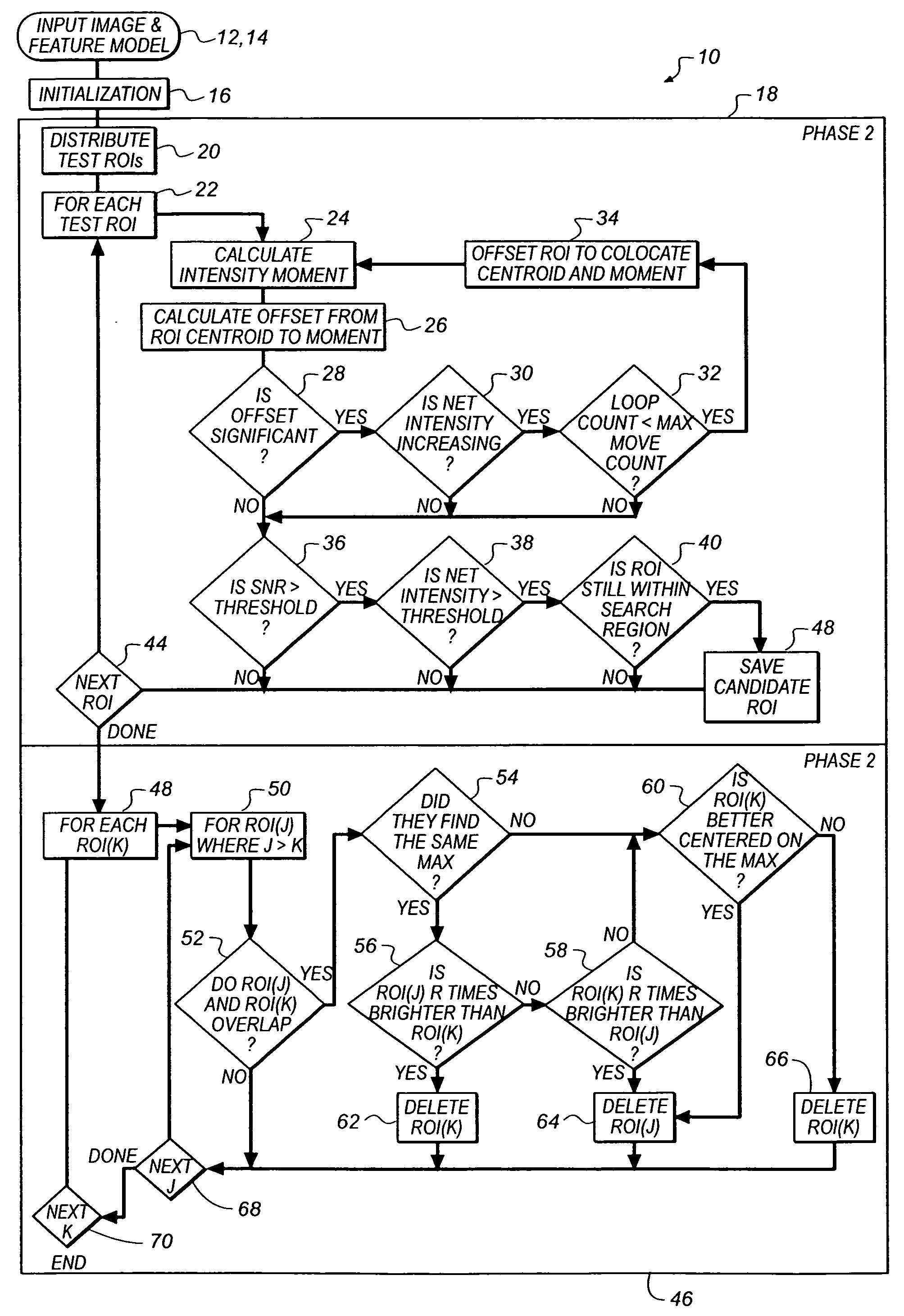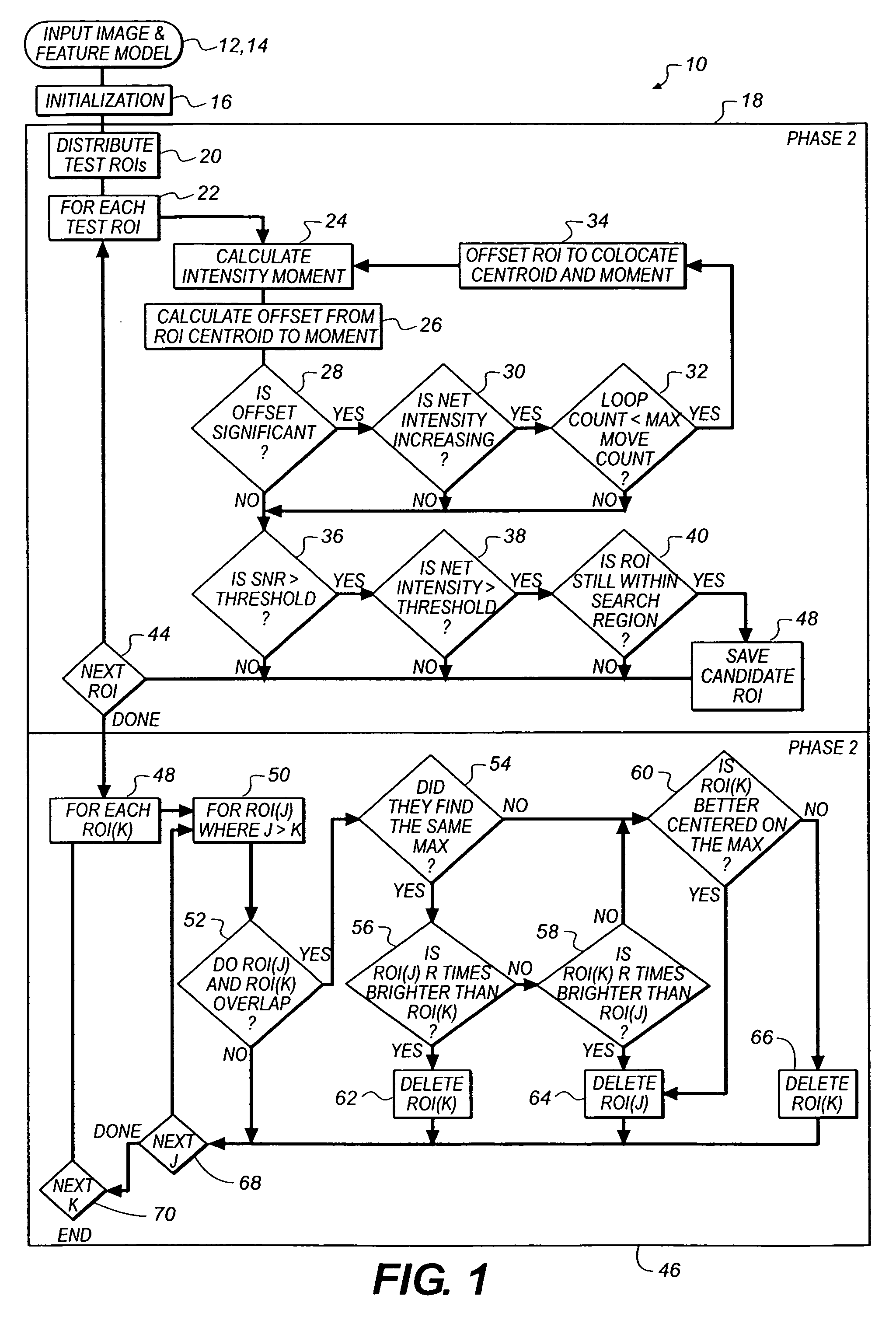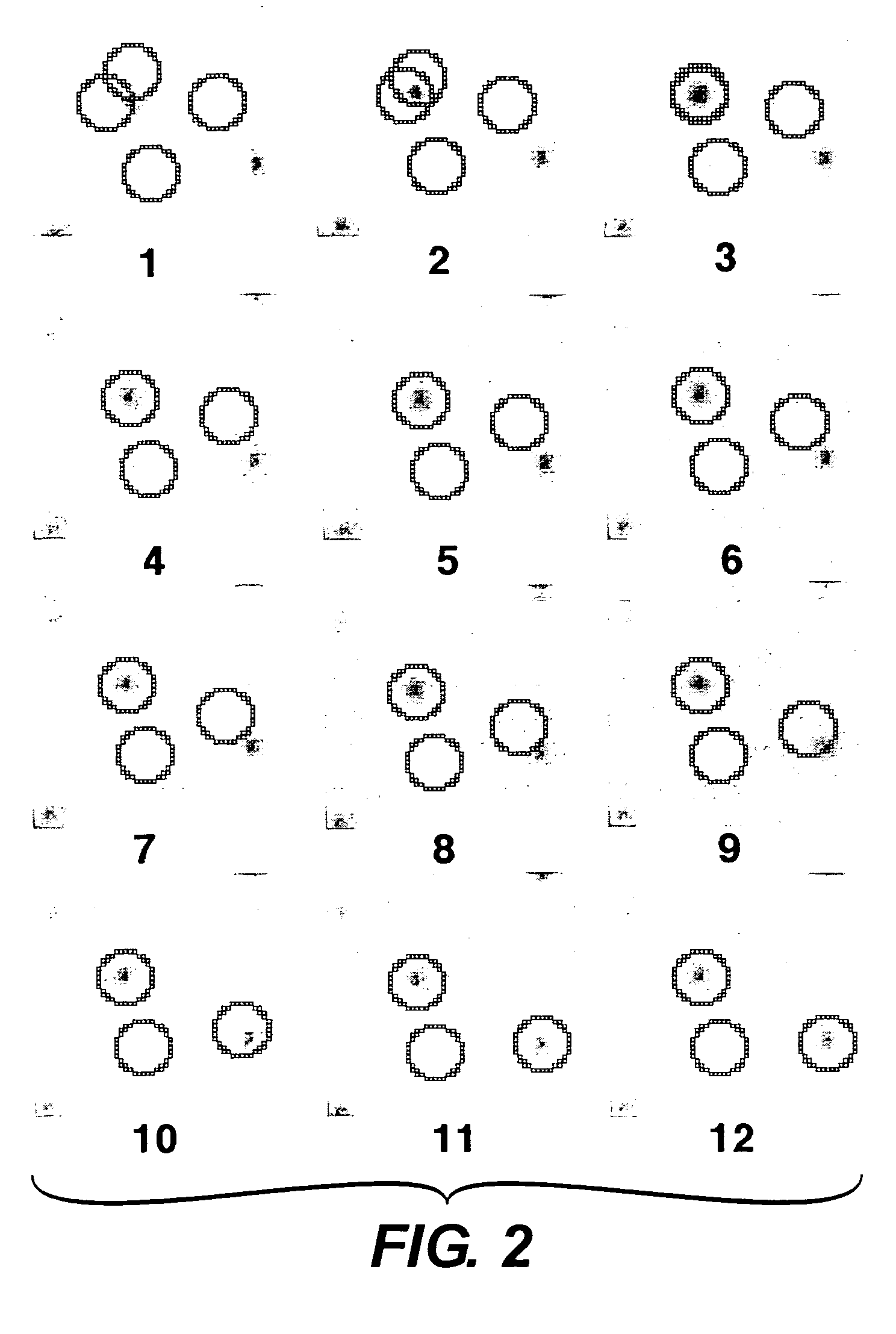Moment based method for feature indentification in digital images
a digital image and feature indentification technology, applied in the field of digital image processing, can solve the problems achieving good results, and achieve the effect of reducing computer processing tim
- Summary
- Abstract
- Description
- Claims
- Application Information
AI Technical Summary
Benefits of technology
Problems solved by technology
Method used
Image
Examples
Embodiment Construction
[0011] The following is a detailed description of the preferred embodiments of the invention, reference being made to the drawings in which the same reference numerals identify the same elements of structure in each of the several figures.
[0012] In general, the present invention is a method for identifying features and / or patterns in a digital image. The method is normally employed with 2 dimensional images, but can also be used with images of any number of dimensions. The required inputs to the method are the digital image itself and a model (Feature Model) that describes features which the user wants to identify. The Feature Model can either be a simple geometric model (for example, a polygon, ellipse, or the like) or a image that represents the objects of interest.
[0013] The method processes the image in two stages.
[0014] In the first stage, a relatively large number of test Regions of Interest (ROIs) are distributed over the image (or a portion of the image) so that every pix...
PUM
 Login to View More
Login to View More Abstract
Description
Claims
Application Information
 Login to View More
Login to View More - R&D
- Intellectual Property
- Life Sciences
- Materials
- Tech Scout
- Unparalleled Data Quality
- Higher Quality Content
- 60% Fewer Hallucinations
Browse by: Latest US Patents, China's latest patents, Technical Efficacy Thesaurus, Application Domain, Technology Topic, Popular Technical Reports.
© 2025 PatSnap. All rights reserved.Legal|Privacy policy|Modern Slavery Act Transparency Statement|Sitemap|About US| Contact US: help@patsnap.com



